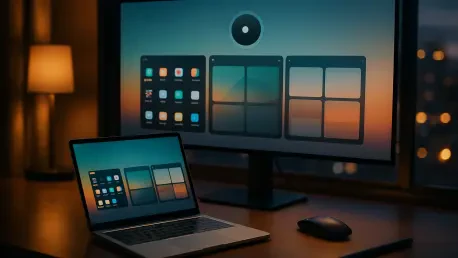As PC makers chase AI performance and platform unity across phones, tablets, and laptops, Google signaled a decisive shift toward an Android-based desktop that could supplant ChromeOS while reaching into premium tiers, and the move set up a direct contest with Windows and macOS for mainstream and high-end buyers. The initiative, internally tied to Aluminium OS, pointed to a unified platform that stretches from budget notebooks to detachable 2-in-1s and mini-PCs, anchoring everything around modern CPUs, GPUs, and NPUs. The pitch was not about squeezing mobile apps onto bigger screens; it framed Android as a desktop-class foundation where system-level intelligence guides workflows, multitasking, and security. That change would not simply rebadge Chromebooks; it sought to transform the category by delivering on-device AI with low latency, deep integration with Gemini, and management controls resilient enough for schools and enterprises.
Strategic Reboot And Market Stakes
Google’s strategy looked unapologetically expansive: one Android-based OS spanning low-end devices through machines marketed as “AL Premium” and “AL Mass Premium,” with the goal of reclaiming ground lost to incumbents at the top of the market. The approach mirrored a broader convergence trend, where mobile-first software grows into desktop roles as silicon adds neural acceleration. ChromeOS delivered simplicity and strong web security, but its identity as a browser-first platform limited traction with performance buyers. Aluminium OS promised a reset by treating Android as the kernel for desktop-grade workloads, positioning Gemini not as an add-on but as an orchestrator for windows, input, and context. The stakes were clear: seize the premium narrative or risk being confined to education and budget tiers.
Market ambition alone would not tip the balance without the right partnerships and polish, and the language around tiering suggested confidence that OEMs were prepared to build to higher specs. That implied reference designs tuned for both Arm and x86, even if silicon targets were not enumerated. The platform message leaned into familiar Android strengths—app breadth, developer velocity, services—while hinting at a more capable windowing model and better input ergonomics for keyboard, mouse, and pen. If executed, the result could blur the line between phone ecosystems and PC workflows. However, it also raised a pivotal question: could Android apps feel desktop-native without sacrificing compatibility, or would developers need incentives and new tooling to rebuild experiences for larger canvases and richer multitasking?
AI-First Architecture And Desktop Experience
The center of gravity sat squarely in AI. Rather than bolting features onto the shell, the OS blueprint pointed to Gemini shaping the core experience: summarizing across apps, staging tasks, prioritizing notifications, and composing media with on-device acceleration when available. By leaning on NPUs and efficient GPUs, Aluminium OS could deliver private, low-latency inference for common tasks, while deferring heavy lifts to the cloud when policies allow. System services would likely expose context securely to models, enabling features like universal search that understands intent, adaptive window tiling, or real-time assistance during video calls and document edits. The competitive edge here came from cohesion—AI embedded at the OS layer, not scattered across apps with uneven behavior and redundancy.
Still, the path to a credible desktop hinged on fundamentals. Windowing needed to be robust; file access, peripheral support, and latency had to match user expectations formed by Windows and macOS. Input fidelity for trackpads, external displays, and docks would define daily comfort. Enterprise readiness required device encryption parity, granular policy management, and a migration story that respected locked-down environments. Google’s measured tone hinted at coexistence with “ChromeOS Classic” for a period, with a possible upgrade path for newer Chromebooks. A first release tied to Android 17 around 2026 made sense, keeping the cadence aligned with major Android improvements while giving OEMs time to validate thermal designs, battery life, and NPU throughput targets for AI-heavy workflows.









